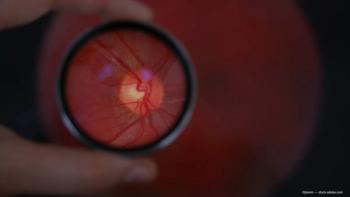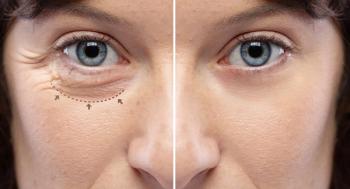
Technology, technique, and transformation: Surgeons celebrate 50 years of progress
Marking 5 decades of Ophthalmology Times, clinicians share the innovations that defined their training, shaped patient outcomes, and continue to push the field ahead.
Fifty years offers a unique moment to pause and consider how far a field has come. As Ophthalmology Times marks its 50th anniversary, physicians across subspecialties reflected on 5 decades of rapid, often transformative progress. From shifts in cataract surgery to the rise of advanced diagnostics and the expanding presence of women in the field, these ophthalmologists described how innovation has reshaped practice—and how continued advancement remains central to delivering the outcomes patients deserve.
How have women and technology transformed ophthalmology?
Cynthia Matossian, MD, founder of Matossian Eye Associates and president of American College of Eye Technicians in New Hope, PA, reflected on the scale of progress, opening with, “Fifty years is a long time! It is half a century,” adding that “a lot has changed in ophthalmology in five decades.” She said one of the most striking shifts is “the number of women ophthalmologists now compared [with] 50 years ago.” When she began her career, “there were very, very few women, let alone women in leadership positions.” Today, she noted, “that landscape has changed,” with “so many women residents, fellows in leadership positions, in industry, and as amazing ophthalmologists.”
Matossian also highlighted advances in diagnostic tools and interventional procedures. “Back then we did not have as many diagnostic tools, as many interventional procedures to help our patients,” she said, referencing diseases such as age-related macular degeneration and glaucoma. She observed that “dry eye wasn’t a thing back then,” but now represents “a whole new category” supported by extensive diagnostic and therapeutic options. She added that corneal care has also evolved significantly. “It’s innovation that’s driving these changes ultimately to help our patients,” she said.
How is femtosecond technology advancing cataract surgery?
Mark Lobanoff, MD, founder and president of OVO LASIK + LENS in Minneapolis, MN, pointed to phacoemulsification as the defining development over the broader 50-year span. “Phacoemulsification by far completely changed how we treat patients with cataract surgery,” he said. But reflecting on changes within his own career, he recalled the first time he saw “a femtosecond assisted cataract surgery.” His reaction—“that’s the future”—captured how the technology signaled a new phase in surgical technique. “That’s an absolutely amazing technology that’s going to change how we operate in the future,” he said.
What 4 innovations are shaping modern eye care?
Monique M. Barbour, MD, an ophthalmologist at Clear Vue Laser Eye Center in Lake Worth, FL, identified “at least 4 things that have been so impactful” since her training in the 1990s. She listed cataract surgery as No. 1, describing how the field has moved “from placing sutures in 180 degrees of the eye and manually expressing the nucleus to doing phacoemulsification through a 2.4 incision and using foldable IOLs.” She called the shift “revolutionary.”
Second, she cited LASIK, “a surgery that has changed the lives of many” and continues to evolve. Her third major advancement was the “discovery and the treatment of macular degeneration and diabetic retinopathy using anti-VEGF medications,” a rapidly progressing area she believes will yield “longer-lasting medications” and more efficient disease control. She expressed hope these treatments could help “stamping out blindness and hopefully eradicating blindness” for patients in need.
Barbour’s fourth transformative area was diagnostic imaging. She emphasized the impact of OCT, noting the progression “from not having any kind of imaging except maybe a fundus photo to now being able to see the vasculature with innovations such as OCTA.” “Those are the big 4 in my opinion,” she said.
How have phaco and the excimer laser changed practice?
Parag A. Majmudar, MD, chief executive officer at Chicago Cornea Consultants, Hoffman Estates, IL, and who has practiced “almost 30 years,” said he has witnessed extensive change. Looking back more than 5 decades, he agreed that “phacoemulsification is No. 1,” calling it the development that “literally transformed cataract surgery 180 degrees.” He said the technology created conditions that allow surgeons to “do so much for our cataract patients.”
In his own career, Majmudar pointed to the excimer laser as the most significant refractive innovation. “The invention of that,” he said, represents an important milestone, and he referenced pioneers such as
How is cataract surgery evolving through new technology?
Neda Shamie, MD, a cornea, cataract, and LASIK surgeon at Maloney-Shamie-Hura Vision Institute, Los Angeles, CA, noted the significance of the publication’s milestone, saying, “this year is the 50th anniversary of Ophthalmology Times.” She added that she has “grown with Ophthalmology Times,” and while she has not been in the field for 50 years, her “20 some years” in ophthalmology have paralleled the evolution of cataract surgery. She recalled her early experiences with the procedure and pointed out that ophthalmology is “one of the fastest innovative fields in medicine.” She said she hopes her daughter will consider the specialty for that reason.
Shamie also described a recent experience that underscored the role of modern technology in surgical performance. During a volunteer trip to Honduras, she was told the center had “older phaco machines,” which she initially welcomed because she had trained on similar systems. But the experience “humbled” her. Operating on technology she used “20 years ago,” she said, made her recognize how much of her current skill “is dependent on the technology.” She said, “I felt like a terrible surgeon compared with my skills today with the right tools in my hand.”
Her reflection reinforced the value of innovation. She said surgeons must “embrace” new technologies because without doing so, “I don’t think we would be able to deliver the kind of outcomes that our patients deserve.”
Cynthia Matossian, MD
E: [email protected]
Matossian is founder of Matossian Eye Associates and president of American College of Eye Technicians in New Hope, PA.
Mark Lobanoff, MD
E: [email protected]
Lobanoff is founder and president of OVO LASIK + LENS in Minneapolis, MN.
Monique M. Barbour, MD
E: [email protected]
Barbour is an ophthalmologist at Clear Vue Laser Eye Center in Lake Worth, FL.
Parag A. Majmudar, MD
E: [email protected]
Majmudar is chief executive officer at Chicago Cornea Consultants, Hoffman Estates, IL
Neda Shamie, MD
E: [email protected]
Shamie is a cornea, cataract, and LASIK surgeon at Maloney-Shamie-Hura Vision Institute, Los Angeles, CA.
Newsletter
Don’t miss out—get Ophthalmology Times updates on the latest clinical advancements and expert interviews, straight to your inbox.









































